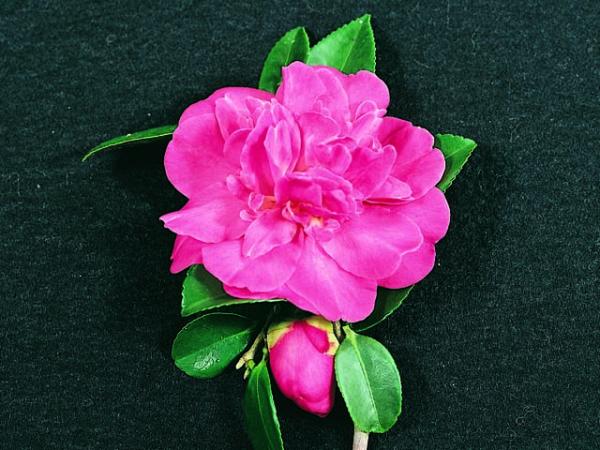Array
(
[0] => Array
(
[id] => 524
[is_published] => 1
[websiteID] => 5
[url] => /gardening/how-to-plant.php
[page_status] => Published
[number_of_ads] => 3
[can_use_editor] => 1
[last_modified_date] => 2013-09-16 00:00:00
[last_modified_by] => Alan
[checked_for_duplicate_content] =>
[title] => How to plant
[heading] => How to plant
[meta_description] => Learn how to plant correctly. Planting correctly will not only get your garden off to a flying start, but it will also ensure that your plants's root systems develop as healthily as possible, maximising their long-term stability.
[article_category_1] => Gardening
[article_category_2] =>
[article_category_3] =>
[article_category_4] =>
[article_category_5] =>
[business_category_1] => Landscaper
[business_category_2] => Nursery
[business_category_3] => Garden Designer
[business_category_4] => Landscape Architect
[business_category_5] =>
[number_of_google_mrecs] =>
[show_google_ad_bottom_of_page] =>
[show_get_quotes_top_of_page] =>
[show_get_quotes_rhs_of_page] =>
[show_directory_search_widget] =>
[show_trending_content_widget] =>
[show_facebook_widget] =>
[show_further_reading_section] => 1
[show_sponsors_section] => 0
[show_top_article_ad] => 1
)
[1] => Array
(
[id] => 7
[is_published] => 1
[websiteID] => 5
[url] => /landscaping/gabion-walls.php
[page_status] => Published
[number_of_ads] => 2
[can_use_editor] => 1
[last_modified_date] => 2013-09-10 00:00:00
[last_modified_by] => Alan
[checked_for_duplicate_content] =>
[title] => Stone Gabion walls and fencing
[heading] => Stone Gabion fencing and retaining walls
[meta_description] => Gabion is a wire basket or wire form, filled with stones and shaped into a fence or retaining wall type structure. Read this article to learn more.
[article_category_1] => Landscaping
[article_category_2] =>
[article_category_3] =>
[article_category_4] =>
[article_category_5] =>
[business_category_1] => Landscaper
[business_category_2] => Nursery
[business_category_3] => Garden Designer
[business_category_4] => Landscape Architect
[business_category_5] =>
[number_of_google_mrecs] => 1
[show_google_ad_bottom_of_page] => 1
[show_get_quotes_top_of_page] => 1
[show_get_quotes_rhs_of_page] => 1
[show_directory_search_widget] => 1
[show_trending_content_widget] => 1
[show_facebook_widget] => 1
[show_further_reading_section] => 1
[show_sponsors_section] => 1
[show_top_article_ad] => 1
)
[2] => Array
(
[id] => 130
[is_published] => 1
[websiteID] => 5
[url] => /landscaping/diy-australian-landscaping.php
[page_status] => Published
[number_of_ads] => 4
[can_use_editor] => 1
[last_modified_date] => 2013-09-10 00:00:00
[last_modified_by] => Alan
[checked_for_duplicate_content] =>
[title] => DIY Australian landscaping
[heading] => DIY Australian landscaping
[meta_description] => Read this informative article and learn how to create a uniquely Australian landscape or garden.
[article_category_1] => Landscaping
[article_category_2] =>
[article_category_3] =>
[article_category_4] =>
[article_category_5] =>
[business_category_1] => Landscaper
[business_category_2] => Nursery
[business_category_3] => Garden Designer
[business_category_4] => Landscape Architect
[business_category_5] =>
[number_of_google_mrecs] => 0
[show_google_ad_bottom_of_page] => 1
[show_get_quotes_top_of_page] => 1
[show_get_quotes_rhs_of_page] => 1
[show_directory_search_widget] => 1
[show_trending_content_widget] => 1
[show_facebook_widget] => 1
[show_further_reading_section] => 1
[show_sponsors_section] => 0
[show_top_article_ad] => 1
)
[3] => Array
(
[id] => 203
[is_published] => 1
[websiteID] => 5
[url] => /gardening/native-hibiscus.php
[page_status] => Published
[number_of_ads] => 5
[can_use_editor] => 1
[last_modified_date] => 2013-09-16 00:00:00
[last_modified_by] => Alan
[checked_for_duplicate_content] =>
[title] => Native Australian Hibiscus
[heading] => Native Hibiscus
[meta_description] => An ever increasing interest in native hibiscus has led to the horticultural development of a number of new cultivars which rival the exotic types in beauty and flower size.
[article_category_1] => Gardening
[article_category_2] =>
[article_category_3] =>
[article_category_4] =>
[article_category_5] =>
[business_category_1] => Landscaper
[business_category_2] => Nursery
[business_category_3] => Garden Designer
[business_category_4] => Landscape Architect
[business_category_5] =>
[number_of_google_mrecs] =>
[show_google_ad_bottom_of_page] => 1
[show_get_quotes_top_of_page] => 0
[show_get_quotes_rhs_of_page] => 0
[show_directory_search_widget] => 0
[show_trending_content_widget] => 0
[show_facebook_widget] => 1
[show_further_reading_section] => 1
[show_sponsors_section] => 1
[show_top_article_ad] => 1
)
)
Helpful articles
How to plant. Learn how to plant correctly. Planting correctly will not only get your garden off to a flying start, but it will also ensure that your plants's root systems develop as healthily as possible, maximising their long-term stability.
Stone Gabion fencing and retaining walls. Gabion is a wire basket or wire form, filled with stones and shaped into a fence or retaining wall type structure. Read this article to learn more.
DIY Australian landscaping. Read this informative article and learn how to create a uniquely Australian landscape or garden.
Native Hibiscus. An ever increasing interest in native hibiscus has led to the horticultural development of a number of new cultivars which rival the exotic types in beauty and flower size.
Plant description

Camellia sasanqua 'Paradise Rebecca' is a hardy evergreen shrub with large pink flowers with crepey petals. The flower has a double row of deep pink petals with a paler pink informal double centre. It is a vigorous, dense upright plant with glossy green foliage to around 4 metres high, and is an excellent hedging variety. It is also good for espalier work, as a screen plant or as a specimen plant. It can be grown in a large container. It can be kept to a lower height with regular pruning. The foliage is good for cut flower work.
Sasanqua camellias can be grown in a sunny spot as well as being well suited to partial shade. They like a slightly acid, moist soil. Water regularly until established. They will handle periods of drought once established. They can be left to grow naturally, or clipped to shape. Fertilise in spring with a camellia and azalea fertilser or general purpose fertiliser. A good layer of mulch around the plant will help to keep the root zone cool, deter weed growth, and conserve soil moisture. They have few pests or disease problems.
Further reading: Hedges and
Pruning a hedge in 7 steps (articles written by horticulturalist Angus Stewart).
Additional plant information
Flowers
Flower colour: pink
Flowering season: autumn
Plant size
Maximum height: 4 metres
Minimum height: 2 metres
Maximum width: not specified
Minimum width: not specified
Sunlight, frost & salt tolerance
This plant will tolerate full or partial sunlight.
Medium frost tolerance.
Plant is salt tolerant.
Fauna attracting?
Yes. Attracts: Birds, bees, insects.
Climate
This plant species will grow in the following climates: cool, temperate, subtropical.
Soil types & conditions
Loam: moist, well-drained.
Clay: moist, well-drained.
Sand: moist.
Soil pH: 5.5-6.5
Pests
Scale, aphids, mites
Miscellaneous information
Planting season: Any.
Types of fertiliser: Good general purpose or azalea and camellia fertiliser.
Find a nursery
Search for another plant

